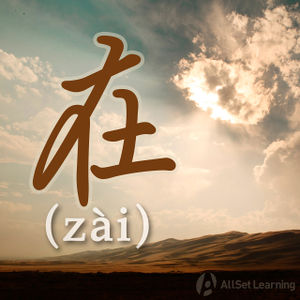Difference between revisions of "Indicating location with "zai" before verbs"
| Line 19: | Line 19: | ||
<div class="liju"> | <div class="liju"> | ||
| − | * 我 <em>在 上海</em> 工作。 | + | * 我 <em>在 上海</em> 工作。<span class="trans">I am working in Shanghai.</span> |
| − | * 我 <em>在 酒吧</em> 喝 酒。 | + | * 我 <em>在 酒吧</em> 喝 酒。<span class="trans">I am drinking at the bar.</span> |
| − | * 他 <em>在 图书馆</em> 看 书。 | + | * 他 <em>在 图书馆</em> 看 书。<span class="trans">He is reading in the library.</span> |
</div> | </div> | ||
| + | |||
| + | Notice that in English we usually put the location at the end of a sentence. This is different in Chinese, as we put the location after the subject but before the verb. | ||
==See also== | ==See also== | ||
Revision as of 05:32, 18 February 2013
-
Level
-
Similar to
-
Used for
-
Keywords
When you want to express the place you are doing something in, you can use 在 (zai).
Structure
To indicate the location that a verb takes place in, 在 is used.
Subject + 在 + Location + Verb + Object
Notice that the location is placed before the verb in Chinese, whereas it appears afterwards in English.
Examples
- 我 在 上海 工作。I am working in Shanghai.
- 我 在 酒吧 喝 酒。I am drinking at the bar.
- 他 在 图书馆 看 书。He is reading in the library.
Notice that in English we usually put the location at the end of a sentence. This is different in Chinese, as we put the location after the subject but before the verb.



